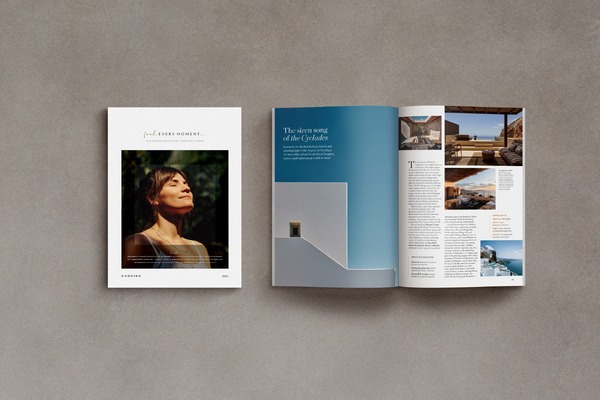'It's the nearest thing we’ve had to an honest and coherent policy since the crisis began'
 Derek Jones
Derek JonesWe should have expected it, I suppose. Having spent most of last summer catching holidaymakers off guard with just two days’ notice of quarantine, Grant Shapps and his Global Travel Taskforce (GTT) have surprised us all again by publishing, a full three days ahead of schedule, their plans to reopen international travel.
Whether this was the result of a super-efficient government department beating its own deadline and not wanting to delay publication or, more likely, a calculated move to ensure that this weekend’s press is full of good news with headlines proclaiming the return of overseas holidays will never be known. Perhaps now is not the right time to dwell on motive.
The introduction of a “traffic light system” has been trailed for so long, it almost doesn’t feel like a new announcement at all. In many ways, it’s not even a new approach. Before the GTT was formed we already had travel corridors (green), home quarantine (amber) and hotel quarantine (red). Sure, it’s a neat way of communicating the rules, but it doesn’t really change the situation that much.
Anyone who’s recently taken their driving theory test will know that while traffic lights are made up of three colours, they actually deliver four signals; green, amber, red and the cheeky one that everyone always forgets; the red/amber combo. It’s so you always know what’s coming next. If you see amber on its own you should get ready to stop, but see amber and red together and you can step on the pedal.
The GTT has applied the same principle but rather than having a red/amber light (“get ready to go”), they’ve introduced a green/amber light (“get ready to stop”). To avoid confusing their neat, three-light system, they’ve slipped in another setting; the “green watchlist”, which identifies countries most at risk of moving from green to amber. But don’t be deceived, this is by any definition, a fourth category, and for the travel industry it may well be the trickiest one of all to manage. But more of that later. For now, let’s focus on the headlines.
BALANCING ACT
This report is good news for the travel industry. It’s the nearest thing we’ve had to an honest and coherent policy for international travel since this crisis began over a year ago. It recognises for the first time that international travel is vital for business and for the UK economy, and it echoes what I and many others have been saying throughout the past 12 months: that travel unites, it brings people together, connects families and allows us to explore new horizons. We should be glad that Grant Shapps and the GTT have acknowledged this. It should be the cornerstone of future government strategy.
Equally, the report pulls no punches about the need to balance the importance of travel with the need to protect the public and the vaccine roll-out from international variants of concern. Nobody in the travel industry disagrees. The taskforce has set out their approach to safely restarting international travel. We can work with this framework, supporting the government by providing the public with clear advice and guidance to help them to understand what is required from them in order to travel again.
This new framework does not reopen international travel from 17 May, far from it, but it does for the first time, set out the roadmap for the gradual reopening of international travel. With the ever-increasing levels of vaccination across the globe, we have to believe that over time the number of countries in the red and amber categories will diminish and the number of green destinations, fully open to UK travellers, will increase.
With review checkpoints in place at the end of June, July and September to see if the restrictions can be rolled back, there is every possibility that by the end of the summer we could be returning to something like normal travel again.
REBUILDING TRAVEL
Now that the roadmap has been published, work can begin in earnest to establish the building blocks that will facilitate the process; affordable and readily available testing; the development of international standards around a digital travel certification system; and the digitisation of the passenger locator form.
So the report is a very positive step in the right direction, but now we must think about the implications for those that wish to holiday abroad.
Testing is going to become an everyday part of international travel with a minimum of two tests being required for every trip abroad. The cost and availability of testing will be a critical issue for all travellers. It is essential that the government work with the industry and private testing providers to significantly reduce the cost of international travel for the British public.
In addition, the report is very clear that the government will “put the emergency brakes on” if international travel poses a net risk to the health of the UK public, so it’s possible, likely even, that some countries will move from green to amber, and from amber to red. While the “green watchlist” will help, it could still happen with very little notice, especially if a new variant of concern is discovered. The report is clear that there are no plans to publish the status of individual countries until ‘early May’, just two weeks before the planned restart. A good indication that that things will continue to shift at relatively short notice.
CONSUMER PROTECTION
There are two cliff edge scenarios that will need to be considered not just by travellers, but by all of us involved in providing advice and guidance to our customers.
The first scenario, where a country jumps straight from green to red, which could happen if a new and easily transmissible variant is discovered, could result in holiday makers having to return to hotel quarantine in the UK at their own cost. The report is clear that the government will “not hesitate to act immediately” should the data show that a countries risk rating has changed.
The second scenario, which is more likely, is that a country which is green at the time of booking, moves gradually towards amber, eventually finding its way on to the watchlist.
The key question is: at what point does the customer have the right to cancel or amend? Will a change from green to “green watchlist” be the trigger or will customers have to wait for the lights to change fully? Even then, will a shift to amber automatically trigger a refund or free amendment? The GTT report makes no mention of Foreign Office advice; a strong indication that there are no plans to continue to use this as a deterrent to travel. Whilst, broadly speaking, this is good news, it does leave open the question of when a refund will be due.
Until the picture is clearer, watching the data closely and booking close to departure looks like the most sensible option. That would be my advice for anyone wanting to get away this summer. For those looking to travel further ahead, the best advice remains the same; book with a trusted tour operator or travel agent, one with a clear, flexible booking policy which allows for cancellation or rebooking if the situation changes.
POSITIVE STEPS
At Kuoni, as soon as the government sets out which countries will fall into each category, we’ll be updating our Covid Travel Advice Hub with everything travellers need to know for every destination. This resource will be available for everyone to use; customers, travel agents and tour operators alike. We believe that we all need to work together to build travel back stronger.
To end where I began, I think it’s important to recognise how significant and positive the publication of this report is. The taskforce has worked closely with the travel industry, recognising the importance of international travel, to establish a framework which allows the sector to restart. This isn’t touchdown, it isn’t even the final approach but we have started our descent and our destination is coming into sight.
This is a red letter day for all of us who work in travel. Let’s celebrate that for now and begin to get back to what we love to do, sharing our passion for travel with customers who are hungrier than ever to start their next adventure.
Sign up for weekday travel news and analysis straight to your inbox

Derek Jones
Supplier Directory
Find contacts for 260+ travel suppliers. Type name, company or destination.












